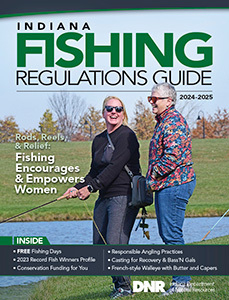Conservation Funding
All wildlife, harvestable or not, need great habitats to thrive. Conservation funding keeps these habitats and species flourishing.
The Dingell-Johnson Act of 1950 requires manufacturers and importers to pay an excise tax on sport fishing tackle, watercraft, boat fuel, and other fishing equipment. The U.S. Fish & Wildlife Service distributes a part of these funds to each state. To qualify and receive funds, Indiana must provide a 25% match with locally generated revenue, which primarily comes from fishing licenses purchased by anglers.
Whether you’re an angler, hunter, birder, wildlife viewer, or an outdoor enthusiast of any type, you benefit from conservation funding. A conservation project created for one species benefits others, and one of those benefitted species may be the one that you love the most. To all of you—anglers and nonanglers—who contribute to this important work, thank you.


